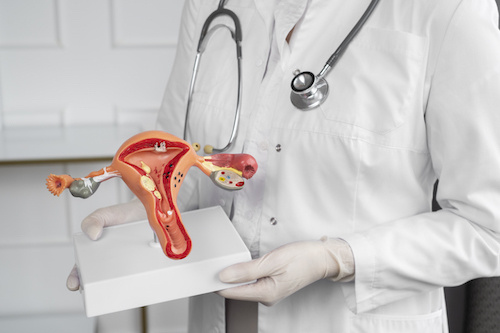Myomectomy (myoma removal surgery) , is an operation to remove fibroids without removing the uterus. Myomectomy is the best treatment option for women who have fibroids and related symptoms (excessive bleeding, pain, large fibroids – compression symptoms, etc.) and want to have children in the future.
It should be noted that fibroids can re-form and grow. The younger you are and the more fibroids you have at the time of myomectomy, the more likely you are to develop fibroids again in the future.
After menopause, fibroids are usually no longer a problem, as they will no longer grow. Cesarean delivery is usually recommended after myomectomy. Because during the labor pains, the possibility of tearing these cuts and stitches may be possible.


First of all, your doctor will determine the type of myomectomy that is suitable for you. Before going
to the hospital, it would be appropriate to go to the anesthesia interview and choose the most appropriate anesthesia method for you with the anesthesiologist. In this process, some tests such as some blood tests, EKG or chest X-ray may be requested. Depending on the type of surgery and sometimes the preference of you and your doctor, general anesthesia or epidural / spinal anesthesia in which your lower back is completely numb (you can stay awake during this time or be put to sleep with light sedatives) may be chosen. Myomectomy can be done in several different ways. Depending on the size, number, and location of fibroids, abdominal (open) myomectomy, laparoscopic myomectomy, or hysteroscopic myomectomy
may be suitable for you.
Abdominal myomectomy is also known as ‘myomectomy’. This is the classic method, surgery is performed through an incision of about 10-12 cm in the lower abdomen (such as a cesarean section). The uterine wall is cut and the fibroids are removed, and the uterine muscle is then repaired using several layers of stitches. Fibroid surgeries can be bleeding because the blood vessels of the uterine wall often enlarge to feed the fibroids. You will often stay in the hospital for two nights and be fully recovered after four to six weeks.
Laparoscopic myomectomy is a closed surgery, but only certain fibroids can be removed in this way. If the fibroids are large, numerous, or deeply embedded in the uterus, abdominal myomectomy may be necessary. It is also sometimes necessary to switch from laparoscopic myomectomy to abdominal myomectomy during the operation. Hysteroscopic myomectomy, on the other hand, is only suitable for women with submucosal fibroids. Submucosal fibroids can be removed by reaching the uterus through the cervix from the vagina with a camera system. Fibroids located within the uterine wall (ie 95% of all fibroids) cannot be removed with this technique.
The length of time you spend in the hospital after myomectomy varies depending on what type of surgery you had. Post-operatively, if you have had general anesthesia, you may feel dizzy and nauseated; these are common side effects of anesthesia and pass away quickly. Close monitoring is required for several hours until fully awakened and able to eat, drink and urinate. You will be asked to walk around as soon as possible after surgery to prevent blood clots in your legs. If you have had an abdominal myomectomy, you may need to be hospitalized for a few days; for laparoscopic and hysteroscopic myomectomies, you can usually be discharged the same day or the next morning.
Most women fully recover and return to life in about four to six weeks after myomectomy. The healing process is also very dependent on the type of myomectomy. Recovery from hysteroscopic and laparoscopic myomectomies is much quicker than recovery from abdominal myomectomy.
Complete recovery after abdominal myomectomy may take up to two to four weeks.
You may have slight vaginal bleeding for a few weeks after fibroid removal surgery. A few weeks of light rest is recommended. In this process, you can take a shower every day freely. Except for the first one or two days, you do not need to close or dress the wound. Generally sutures are self dissolving.
Sexual intercourse is not recommended for two weeks after fibroid removal surgery. You can return to sports after a month. In general, you can return to work at the end of a week, in open surgeries, this period may be two to three weeks